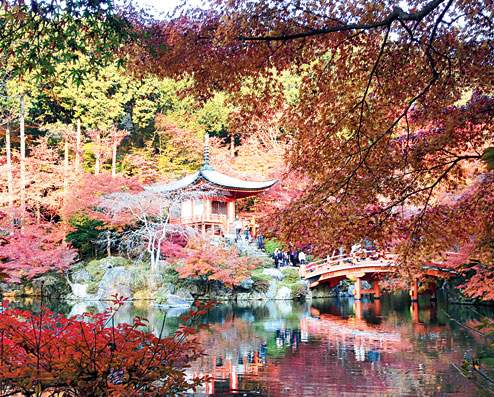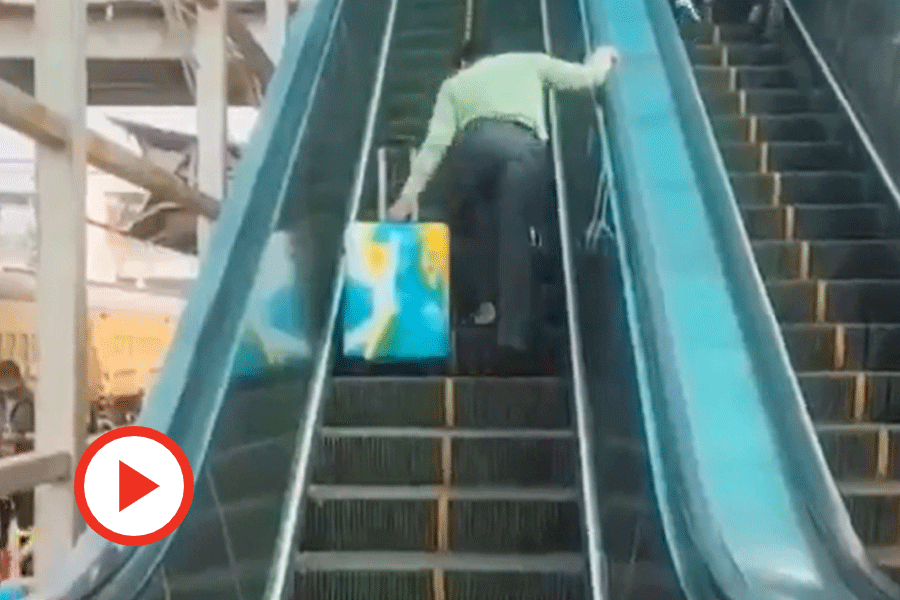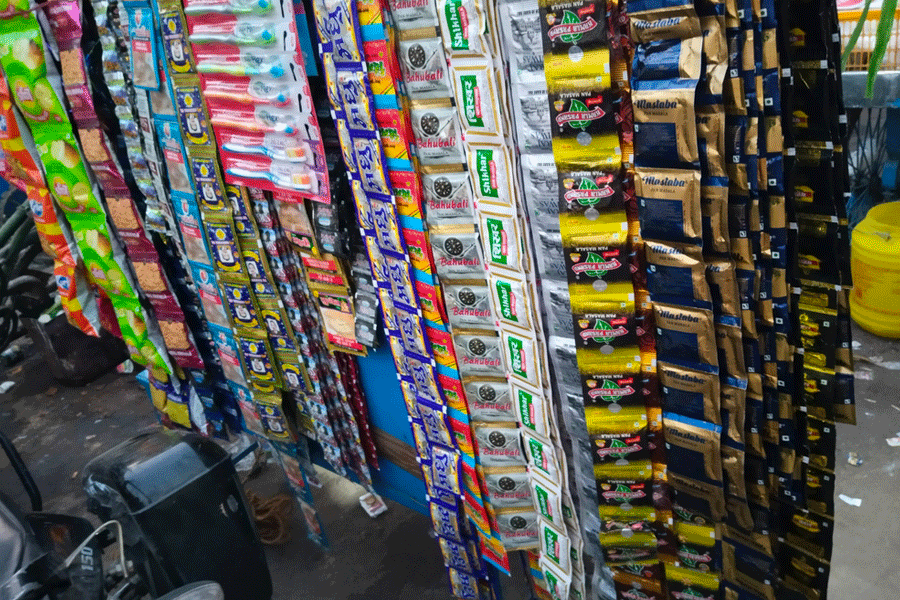 |
| Autumn foliage in Kyoto temples |
Situated in the island of Honshu in Japan, Kyoto boasts over 1,600 temples and shrines, and 17 World Heritage sites. Whether you are strolling down the famous Philosophers Walk, marvelling at the splendour of Kinkakuji Temple’s gilded walls, or gazing at the Koi Carp (a variety of colourful fish) swimming in the ponds by the Silver Pavilion, Kyoto appears to be a city that can be enjoyed only during the day.
Look a little deeper and you will discover countless gems, often mixed in with the downright strange, worth encountering by the light of the moon. From temple light-ups to giant parfaits, here’s a taste of what the City of Zen has to offer under the stars.
Of temples, lanterns and willow
For the midnight wanderer, day begins at twilight, weaving between the dim alleyways and squat wooden townhouses of Kyoto’s Higashiyama district. Here, the city’s history as the ancient capital of Japan (794 to 1868-69) is preserved in its narrow cobble-streets, tatami (a type of woven mat) tea-rooms and dreamy hillside shrines. Lanterns light up the passages, overhanging steamy roadside kitchens that sell roasted chestnuts and summer evening bean cakes. As weary tourists amble towards the modern city centre, somewhere in the darkening shadows of the old district, a geisha recedes into the blue coolness of a Japanese garden.
 |
| Cherry blossoms line Kyoto rivers in spring |
Situated along the lower slopes of Kyoto’s eastern mountains, Higashiyama is steeped in Japanese tradition and night landscapes that transform with the changing seasons. The 2km walk from Yasaka Shrine near the bustling centre to Kiyomizu-dera, a temple nestled in the mountains on the outer regions of the district, offers myriad sensations throughout the year.
Walking through Yasaka Shrine, the midnight traveller may stop in Maruyama Park to admire Japan’s most famous blossoming willow, a towering structure, ghostly and pale pink in the moonlight. During the 10-day Hantaro festival in March, lanterns line the ancient pathways ascending from the park up to Kiyomizu-dera, illuminating sleepy machiya townhouse lanes along the way. Once at Kiyomizu-dera, there’s the breathtaking view of Kyoto valley at night, lit up dramatically to showcase the blushing pinks of hillside cherry blossoms in spring, or the fiery reds and oranges of Japanese maples engulfing the city in autumn.
Geishas and green tea ice cream
 |
Beyond Higashiyama, the Shijo-Gion district of Kyoto offers an eclectic mix of the modern and the old. In Hanamikoji Street, a famously preserved avenue of haute-cuisine restaurants serving up traditional Kyo-ryori (refined seasonal Kyoto cuisine), you have the best chance to spot a geisha shuffling across the street to her next nightly appointment. Further west, the main streets of Gion bustle with people weaving their way through brightly-lit arcades of eateries and boutique stores. Stop by Tsujiri Cafe for a Gion Matcha Parfait, an authentic Kyoto experience of bittersweet green tea ice cream, Mochi (a type of sticky rice cake), Sponge Cake and Green Tea Jelly.
Electrifying Sanjo
 |
| Sakura Frappe and Macaron — a limited Starbucks spring special |
Gion serves as a threshold between ancient Kyoto and its modern counterpart. Travel north-west into Sanjo and the transformation into a contemporary buzzing city will be complete. While the old districts evince a muted stately charm, Sanjo exudes a vibrant energy that comes alive when the sun goes down. From Keihan Sanjo station, walk across the bridge spanning the Kamo river, through groups of fresh-faced partygoers and blond-haired Japanese youths. Coming down the bridge, you see the riverside, a landscape of twinkling bar lights, where fire-dance performers entertain crowds of students and tourists with electrifying routines and bassy beats.
Further down Sanjo’s main avenue, there’s an array of contemporary Japanese curiosities. A convenience store with glaring white lights serving green tea Kit-Kats and ready-made sushi. Young couples sipping Sakura Frappuccinos on a Starbucks balcony overlooking the river. Izakaya bartenders standing on street corners offering all-you-can-drink beer and Karaage (fried chicken marinated in ginger, garlic and soy). Souvenir shops selling everything from Hello Kitty keychains to lacquered walking sticks.
 |
| La Reve parfait, a jumbo concoction of ice cream, fruits and cakes |
Walk down Sanjo’s shopping arcades for budget-eating opportunities, from Ramen noodles at Kairiya and Yakiniku Meat Barbecue at Chifaja to Thai food at Pakuchi and a taste of Japanese curry at Cocoichibanya Curry House.
End the night with a visit to Karafuneya Coffee, a parfait-specialist cafe fronted by a dizzying array of 200 life-like ice cream models, including chocolate and mango parfait, Fried Prawn Sundae and Le Reve, a jumbo concoction of ice cream, fruits, cakes and flowers for 25 people.
After leaving, it will be difficult to believe that Kyoto is real, and not a waking dream.
Tips to get around in Kyoto
 |
| Typical Kyoto cuisine consists of pickles, beans and rice |
Use public transport: Kyoto has a variety of rail, tram and bus services that are convenient and easy to use.
Invest in an ICOCA card to substitute train tickets. You can top them up at any station, and can even use them on vending machines!
Explore the numerous bus stands outside Kyoto station. They will take you to various tourist destinations across the city.
Ask station staff for information. They are friendly and know the city better than anyone else.
Enquire about travel discounts before and during your stay. As a tourist you may be entitled to a JR Pass (a special travel permit, which you can apply and pay for before coming to Japan. It is only issued to foreigners and allows you to use any train run by Japan Railways, including most bullet trains). If you arrive in spring, you may avail of a Seishun Kippu Pass that will allow you to travel around Japan at a hugely discounted price.
For easy and cheap day trips from Kyoto station, try visiting the northern district of Arashiyama, the green-tea lovers paradise of Uji city, the historic Buddhist city Nara and Osaka, a shopping, dining and clubbing metropolis.










